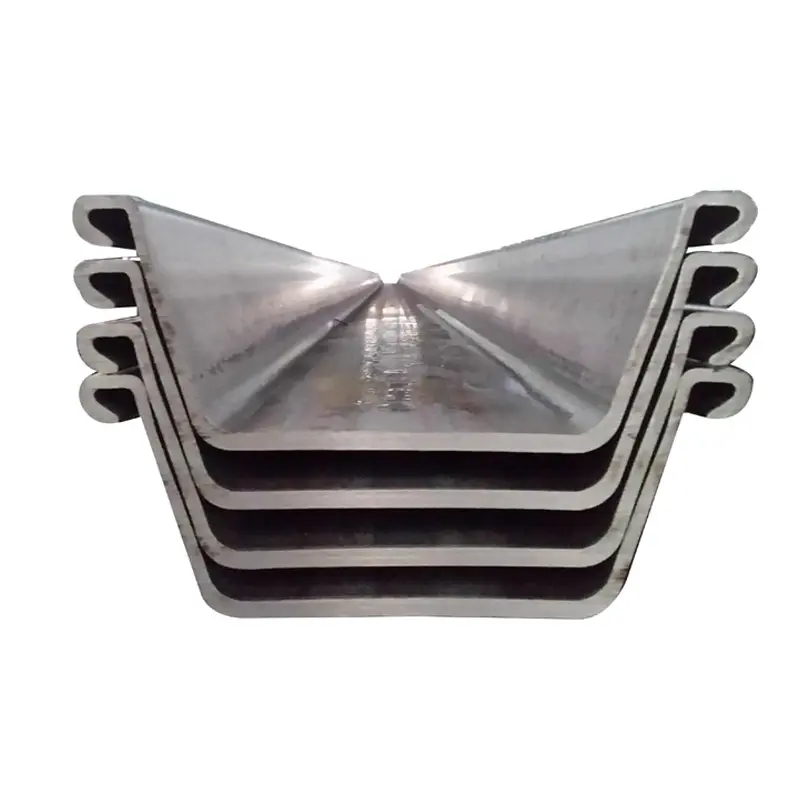Waterproof steel sheet pile is a specialized type of retaining wall structure designed to prevent water infiltration, making it ideal for waterfront projects, coastal engineering, and construction in water saturated soils. These sheet piles are made from high strength steel, typically in the form of interlocking panels with a Z shaped or straight web profile, which creates a continuous barrier when driven into the ground. The key feature of waterproof steel sheet piles is their tight interlock design, which minimizes seepage between adjacent piles. Materials commonly used include carbon steel grades like Q235, Q345, or ASTM A36, often coated with a protective layer such as hot dip galvanization or epoxy paint to enhance resistance to marine or corrosive environments. The manufacturing process involves cold rolling or hot rolling to form the pile sections, followed by quality control checks for dimensional accuracy and interlock compatibility. Waterproof steel sheet piles are installed using vibratory hammers, impact hammers, or hydraulic presses, depending on soil conditions. They are used in applications such as harbor walls, river embankments, basement excavations in wet areas, and wastewater treatment plants. The design of these sheet piles considers factors like water pressure, soil loads, and environmental conditions to ensure structural stability and watertightness. Engineers often conduct soil mechanics analyses and hydraulic calculations to determine the appropriate pile length, section modulus, and installation method. Post installation, the integrity of the waterproof barrier is verified through visual inspection of interlocks and, in some cases, water pressure testing. The durability and reusability of steel sheet piles make them a sustainable choice for temporary or permanent waterfront structures, offering long term protection against water intrusion while minimizing environmental impact.


